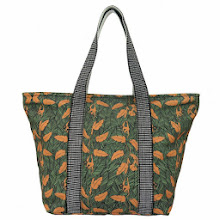The above portrait of Mary Queen of Scots continues the tradition of
portraiture which was practiced during Mary’s own life and times
(1542-1567). Only an few artists were invited to paint her face to
face, but many portraits and cameos existed of her. The from-life
paintings were reproduced by other artists who often referenced more
than one original painting. The results had varying degrees of accuracy
which is why we find it difficult to know exactly what Mary looked
like. The symbolism created by the artist in the from-life paintings
were propaganda, intended to reveal aspects of her personality and
belief. Cameos and portraits were worn or displayed in support of Mary,
the un-recognised Queen of Scotland and England and Queen Dowager of
France.
To produce his above portrait of Mary, Queen of Scots, Patrizio
Belcampo has drawn reference from a variety of paintings of Mary, some
of which were taken from life, some were taken from other painters
interpretations. This places his screenprint as a contemporary artwork,
which references and respects the traditions of Mary’s generation of
artists. The paintings he referred to are:
Nicholas Hilliard’s “Mary in Captivity” c.1578,
Rowland Lockey’s portrait of 1578
and The Blairs Memorial Portrait (painted after her death) from the early 17th:
The memorial portrait can currently be seen in the National Museum of Scotland exhibition
and as it is usually exhibited in the owners private collection, this
is a rare opportunity to see the striking painting in the flesh.
Patrizio’s print draws influence from this painting (in particular the
head dress and Mary’s black attire) which will always link his limited
edition print, back to this remarkable painting.
Patrizio has pulled various elements from the above compositions and
stylized them to his own design. The collar, crusafix, hair piece and
facial features are easily identified, as is the use of text and flat
background colour. The reduction of a 3 dimensional figure to flat
colours is part of Patrizio’s design process, which embarrasses the
restrictions of screenprinting and emphasizes the artist’s skill for
distilling a complex image to it’s necessary parts, revealing a minimal,
yet striking likeness.
This process of reducing a 3D object to a minimal, flat composition
is a process Mary, Queen of Scots would have used to create her
largescale tapestries which she worked on during her time in captivity,
1569 – 1587. (An example of this can be seen in the NMS exhibition).
One octagon shaped panel, depicts some embroidered, stylized foliage,
Mary’s motto for this section is “do not place to much trust in
appearances”. Given her turbulent life, this motto has extra
significance, but when applied to Mary’s embroidery and The Blair’s
Memorial Portrait, it emphasizes the underlying symbolism and importance
of hidden meaning within her everyday life. By adopting 16th century
iconography into his Mary, Queen of Scots, Patrizio Belcampo references a
time period whose language is almost extinct
The M and R symbols are derived from Mary’s signature monogram used
in her tapestries, and reminds us of her French upbringing, it would
have been instantly recognizable as her monogram, in the 16th century.
The necklace is a filigree, catholic prayer necklace or “rosary” (the
rose it’s self has another meaning in paintings of this time, any
ideas?) and the hand gesture, Patrizio Belcampo regards it as a
compositional decision, intended to display the most recognizable form
of a feminine hand when reduced to a flat colour. What it would have
ment to Mary’s audience is another matter, as is what you derriere from
it.
If you would like to discuss any of these symbols with the Artist, or
The Red Door Gallery team, please come along to The National Museum of
Scotland for their After Hours Event. Tonight at 7pm or Saturday August 24th.
If you would like to discuss any of these symbols with the Artist, or The Red Door Gallery team, please come along to The National Museum of Scotland for their After Hours Event. Tonight at 7pm or Saturday August 24th.
Mary, Queen of Scots by Patrizio Belcampo
Saturday, 17 August 2013
Mary, Queen of Scots by Patrizio Belcampo
Subscribe to:
Post Comments (Atom)








No comments:
Post a Comment